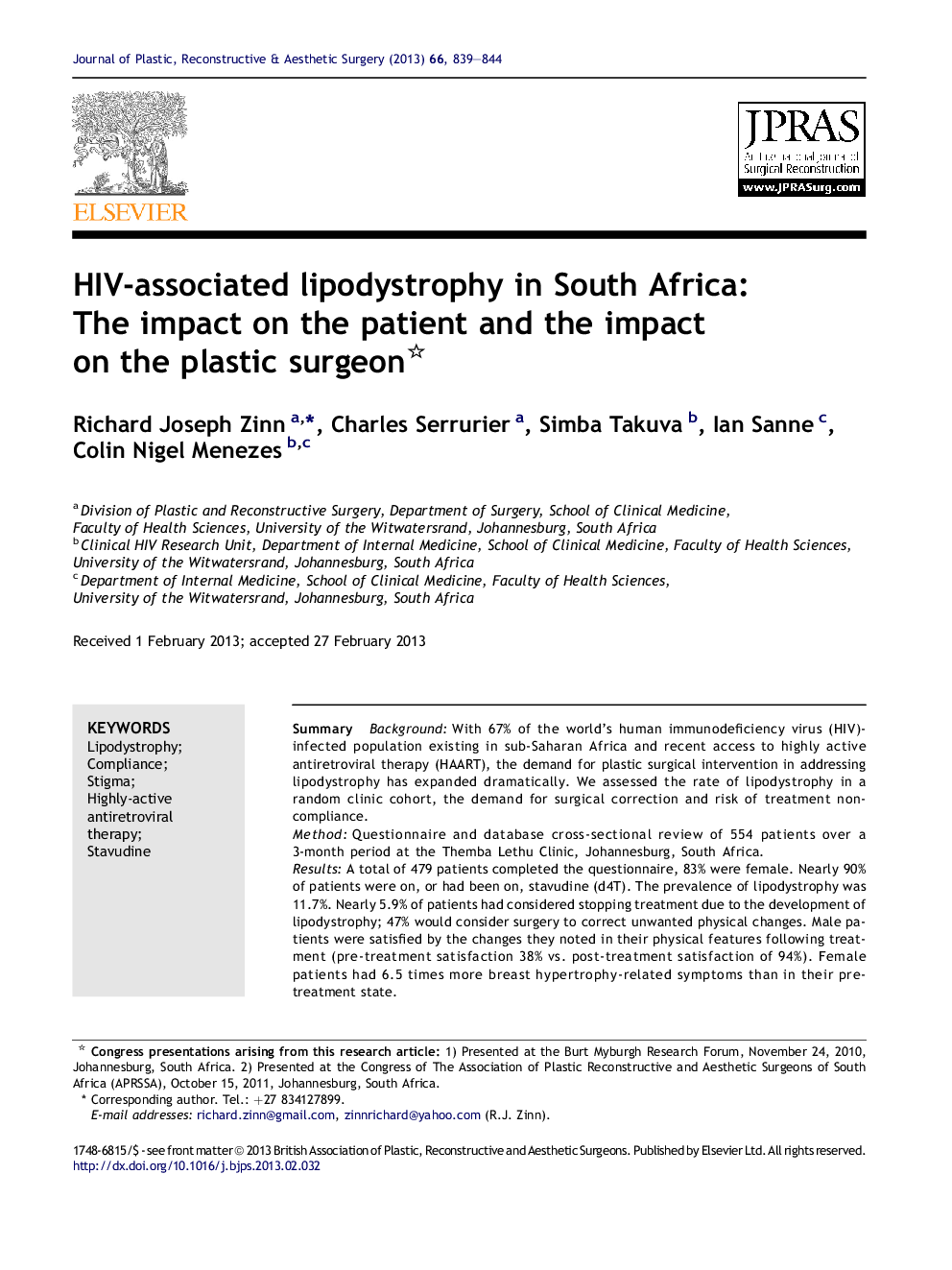| Article ID | Journal | Published Year | Pages | File Type |
|---|---|---|---|---|
| 4117725 | Journal of Plastic, Reconstructive & Aesthetic Surgery | 2013 | 6 Pages |
SummaryBackgroundWith 67% of the world's human immunodeficiency virus (HIV)-infected population existing in sub-Saharan Africa and recent access to highly active antiretroviral therapy (HAART), the demand for plastic surgical intervention in addressing lipodystrophy has expanded dramatically. We assessed the rate of lipodystrophy in a random clinic cohort, the demand for surgical correction and risk of treatment non-compliance.MethodQuestionnaire and database cross-sectional review of 554 patients over a 3-month period at the Themba Lethu Clinic, Johannesburg, South Africa.ResultsA total of 479 patients completed the questionnaire, 83% were female. Nearly 90% of patients were on, or had been on, stavudine (d4T). The prevalence of lipodystrophy was 11.7%. Nearly 5.9% of patients had considered stopping treatment due to the development of lipodystrophy; 47% would consider surgery to correct unwanted physical changes. Male patients were satisfied by the changes they noted in their physical features following treatment (pre-treatment satisfaction 38% vs. post-treatment satisfaction of 94%). Female patients had 6.5 times more breast hypertrophy-related symptoms than in their pre-treatment state.ConclusionWe identify a prevalence of 11.7% of patients with HIV-associated lipodystrophy, of whom 5.9% would consider non-compliance on the basis of this side effect alone. The demand for surgical correction is significant and needs to be addressed.
